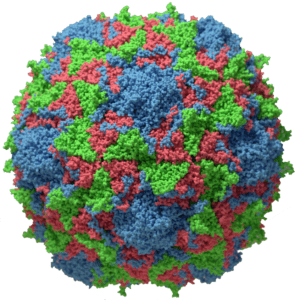

A new vaccine candidate was made by producing the poliovirus capsid protein VP1 in the chloroplast of tobacco plants (nuclear-directed antigen synthesis is often inefficient). VP1 was fused to the cholera toxin B (CTB) subunit which allows good transmucosal delivery of the protein. Leaves were freeze dried, ground to a powder, mixed with saline and fed to mice after subcutaneous inoculation with IPV. The results show that boosting with the plant-derived VP1-CTB protein lead to higher antibody neutralizing titers (against all three poliovirus serotypes) both in the blood and in fecal extracts, compared with mice inoculated with IPV alone.
The VP1-CTP protein within lyophilized plant cells was stable for 8 months at ambient temperatures. If immunogenicity is maintained under these conditions, it would eliminate the need for a cold chain to maintain vaccine potency, an important achievement.
The authors propose that plant-produced VP1-CTP protein could substitute for IPV once the use of OPV is discontinued. Whether this suggestion is true depends on confirmation, by clinical trial, of these findings in humans. Furthermore, oral administration of VP1-CTP plant cells alone produces no serum neutralizing antibodies, and whether VP1-CTP boosts immunity in OPV recipients remains to be determined. Because VP1-CTP does not provide protection in children who have never received IPV or OPV, it cannot be used if poliovirus circulation continues indefinitely in the face of a growing cohort that has not been immunized with IPV or OPV. Nevertheless the technology has promise for the development of other vaccines that are inexpensive and do not need low temperature storage.
